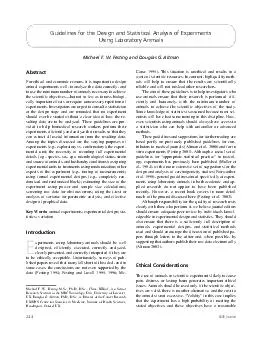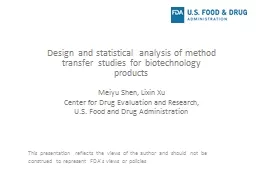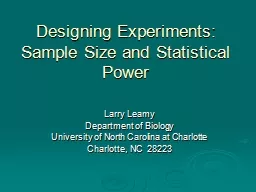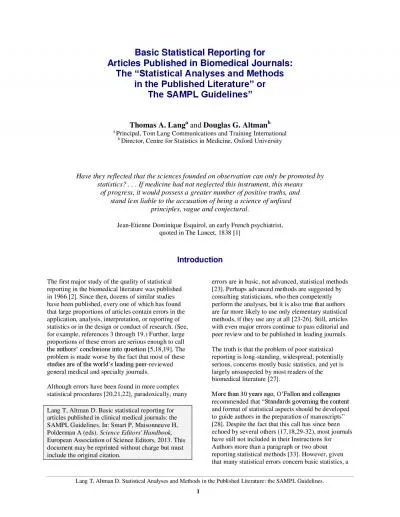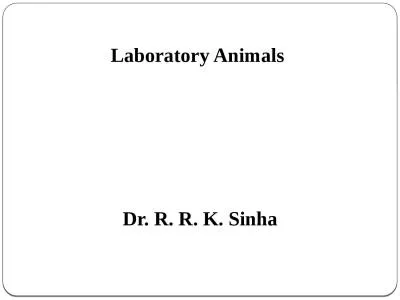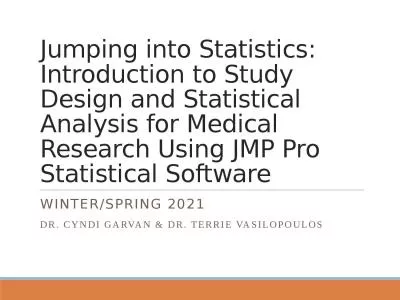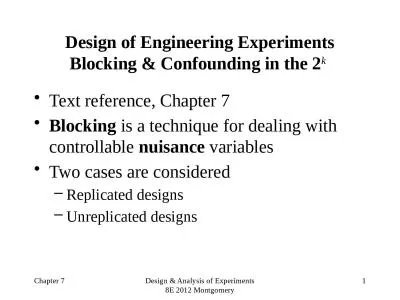PDF-Guidelines for the Design and Statistical Analysis of Experiments Using Laboratory Animals
Author : cheryl-pisano | Published Date : 2014-12-27
W Festing and Douglas G Altman Abstract For ethical and economic reasons it is important to design animal experiments well to analyze the data correctly and to use
Presentation Embed Code
Download Presentation
Download Presentation The PPT/PDF document "Guidelines for the Design and Statistica..." is the property of its rightful owner. Permission is granted to download and print the materials on this website for personal, non-commercial use only, and to display it on your personal computer provided you do not modify the materials and that you retain all copyright notices contained in the materials. By downloading content from our website, you accept the terms of this agreement.
Guidelines for the Design and Statistical Analysis of Experiments Using Laboratory Animals: Transcript
Download Rules Of Document
"Guidelines for the Design and Statistical Analysis of Experiments Using Laboratory Animals"The content belongs to its owner. You may download and print it for personal use, without modification, and keep all copyright notices. By downloading, you agree to these terms.
Related Documents

